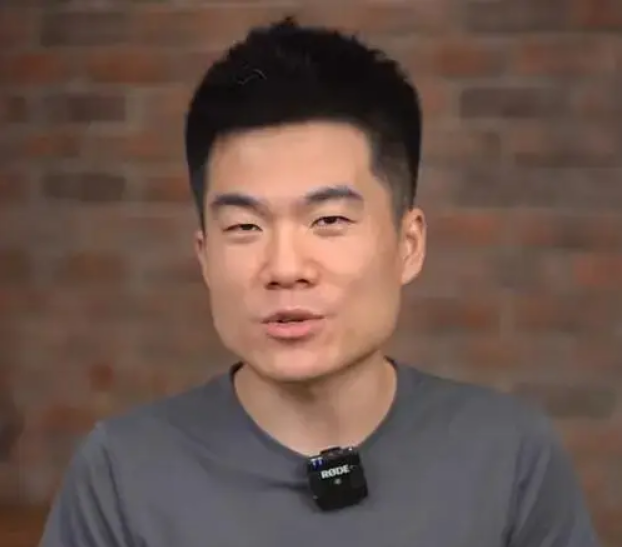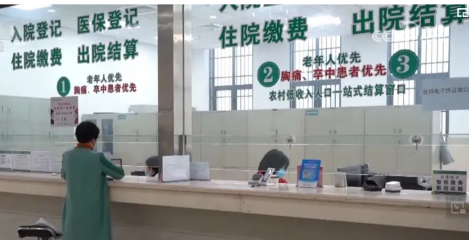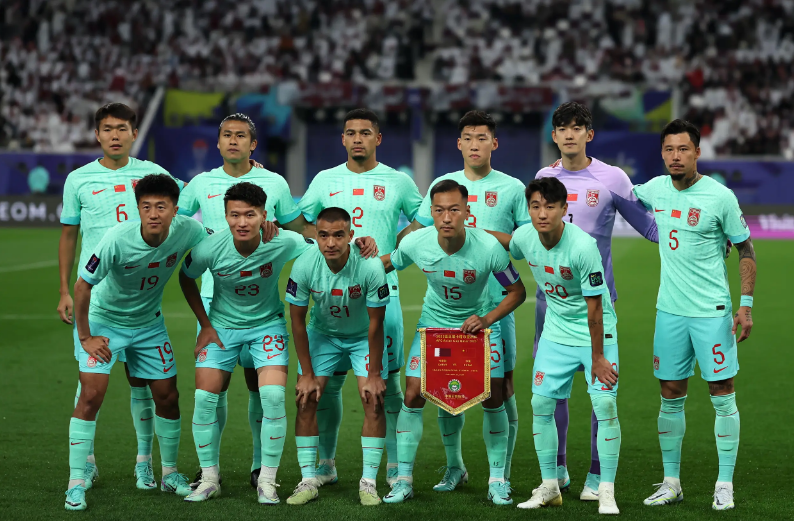Wellcome Photography Prize 2025: Winning Images Reveal Powerful Stories of Science and Health
Sujata Setia, Mithail Afrige Chowdhury and Steve Gschmeissner awarded £10,000 each for images exploring domestic abuse, climate migration and the hidden dangers of cholesterol

A Thousand Cuts, Sujata Setia, 2023, Urban Travel, Mithail Afrige Chowdhury, 2023, Cholesterol in the Liver, 2022, Steve Gschmeissner
Click Here to download press images and captions
LONDON, July 25, 2025 (GLOBE NEWSWIRE) -- Wellcome's 2025 Photography Prize celebrates three image makers whose work reveals the human stories behind science and health. UK-based artist Sujata Setia, Bangladeshi documentary and street photographer Mithail Afrige Chowdhury, and UK-based electron microscopy specialist and science photographer Steve Gschmeissner have each been awarded a £10,000 prize for powerful images that reflect how science and health shape people's lives in complex and deeply personal ways, from the from the hidden toll of domestic abuse to the everyday realities of climate migration, to the microscopic processes that underpin heart disease.
Now in its 28th year, the Wellcome Photography Prize celebrates compelling imagery at the intersection of science, health and human experience. From documentary photography to microscopy and medical imaging, it highlights diverse perspectives on global health and the vital role of visual storytelling in creating a healthier future.
The top 25 entries are now on display in the Wellcome Photography Prize 2025 exhibition, which is free and open to the public at the Francis Crick Institute in London, running until 18 October 2025. Each of the finalists has received a £1,000 prize, with a total of £52,000 awarded across the competition.
Lara Clements, Associate Director, Engagement, Wellcome, says, “The Wellcome Photography Prize offers image-makers a platform to showcase the impact of science and health on lives around the world. This year's winning works stood out not only for their technical accomplishment, but for the care and collaboration behind them. Sujata Setia's portraits raised powerful questions around dignity, confidentiality and sensitivity. Mithail Afrige Chowdhury's image exemplified the value of being embedded in the community and explored themes of adaptation, illusion and fantasy in a compelling way. Steve Gschmeissner's biomedical image impressed us with its precision and raised important questions about how scientific imagery is shared and understood by the public. We hope audiences will find the winners' work moving, educational and inspiring, and enjoy the full exhibition at the Francis Crick Institute.”
The Winners
In the Storytelling Series category, Sujata Setia was recognised for A Thousand Cuts, a deeply collaborative portrait project developed with survivors of domestic abuse within South Asian communities. Each image is a composite of personal testimony, visual symbolism, and traditional craft. Setia worked with the women and with the charity SHEWISE to create portraits that protected anonymity without erasing identity, applying the Indian paper-cutting technique sanjhi to overlay each photograph. The results are intimate, powerful reflections on generational trauma, silence, survival, and the politics of representation. From the account of a woman forced into marriage twice by her father and left with lasting PTSD, to a mother determined to break the cycle of violence for her daughter, the series captures how abuse can become ingrained and normalised, and how art can offer a means of reclaiming narrative.
Sujata Setia says, “This is a monumental recognition. A Thousand Cuts being selected for Wellcome Photography Prize affirms that health cannot be separated from the histories that shape it. And that domestic abuse is never a singular event; it leaves a direct, trans-generational imprint on health. As a child who grew up in a home where violence was a daily occurrence, I carry that trauma like another limb. This recognition validates not just my story, but the invisible, intangible, yet deeply scarring legacy of gender-based abuse. Domestic abuse is one of the most widespread global crimes; and yet remains among the least publicly acknowledged health crises. I hope this moment becomes a catalyst for deeper dialogue and scholarship around the interrelation between domestic abuse and health. That is our collective hope.”
Mithail Afrige Chowdhury was awarded the Striking Solo Photography prize for Urban Travel, a deceptively gentle image of a mother and daughter on a rooftop picnic in Dhaka. With few parks left in the city due to rapid urbanisation, this staged moment, a simple attempt to give a child a taste of nature, becomes an act of resilience. Nearly half of Dhaka's population today are climate migrants, displaced by increasingly extreme weather, and Chowdhury's work highlights the everyday consequences of these shifts: the loss of green space, of childhood rituals, of breath. The photograph is tender, composed, and yet filled with tension, a portrait of care and adaptation under invisible pressures.
Mithail Afrige Chowdhury says, “When I got the news, the first thing I did was charge my camera—not to take a photo, but to restart something I thought I'd lost. I won't dwell on personal or professional hardships, but this moment means more than I can say. I made this image two years ago, as part of a major project on climate change, urban sustainability, and public health. Then life intervened, and fear slowly pulled me away from the work I loved. But now, I can wake up with an objective. Because someone has my back. And that makes all the difference. Awards can feel technical but this recognition from Wellcome feels deeply human.”
The winner of The Marvels of Scientific and Medical Imaging was announced as Steve Gschmeissner, whose electron microscopy image Cholesterol in the Liver reveals cholesterol crystals (shown in blue) forming inside lipid-laden liver cells (purple). These microscopic shifts, invisible to the naked eye, can have deadly consequences: when cholesterol hardens from liquid to crystal, it damages blood vessels and contributes to heart disease and strokes. Gschmeissner's colourised SEM image transforms this biological process into something visually striking, part data, part artwork. With a career spanning over four decades, and more than 10,000 images published in scientific journals, stamp collections, fashion collaborations, and music albums, his work exemplifies how imaging can bridge science and culture.
Steve Gschmeissner says, “When I discovered that Wellcome had reintroduced the Marvels of Scientific and Medical Imaging category, I was delighted to enter such a prestigious competition. I was thrilled to be shortlisted, and winning first prize is undoubtedly one of the highlights of my 50-year career of trying to bring the wonders of the microscopic world to all.”
This year's prize drew submissions from over 100 countries. The Top 25 entries featured over 30 individuals from 18 countries, spanning Bangladesh, Brazil, France, Germany, Greece, India, Italy, Myanmar, Peru, South Africa, Spain, Uganda, the UK, USA and beyond.
The winners were selected by an international judging panel comprising leading voices from photography, science, health and journalism. The panel was chaired by Melanie Keen, Director of Wellcome Collection, and included Caroline Hunter, Picture Editor at The Guardian; Daniella Zalcman, Photographer and Founder of Women Photograph; Benjamin Ryan, Independent Science Journalist; Elizabeth Wathuti, Environmental and Climate Activist; Esmita Charani, Associate Professor at the University of Cape Town; Helen Fisher, Professor of Developmental Psychopathology at King's College London; Noah Green, Science Educator at the Beautiful Biology Initiative; and Mark Lythgoe, Director of the UCL Centre for Advanced Biomedical Imaging.
Wellcome Photography Prize Exhibition
Curated by Laurie Britton Newell and Ligaya Salazar, the Wellcome Photography Prize exhibition features images that reflect a wide spectrum of health experiences, from everyday routines to global challenges. Using techniques such as portraiture, cyanotypes, drone photography, and light and electron microscopy, the image makers show how health is lived, documented and researched around the world.
Many of the works respond to Wellcome's core focus areas, mental health, climate and health, infectious disease and discovery research. Together, they reveal how these issues overlap and take shape in different cultural and geographic contexts. The result is a layered and often unexpected portrait of health today, told through voices and perspectives that are frequently overlooked.
Among this year's highlights are Marks of Majesty: Vanessa by Julia Comita and Stephanie Francis, a portrait honouring the life and choices of a person impacted by breast cancer who opted for aesthetic flat closure, challenging assumptions around gender, illness and identity. Beautiful Disaster by Alexandru Radu Popescu shows a lake of toxic mining waste in Romania that continues to expand each year, an image of both striking beauty and environmental damage. Resilience Artist by Pyaephyo Thetpaing captures a craftsman in Myanmar who creates lacquerware using his foot, offering a broader reflection on health, disability and the role of cultural tradition in healing.
In the scientific imaging category, Ice and Fire Chronics by Ingrid Augusto, Kildare Rocha de Miranda and Vânia da Silva Vieira shows the structure of the parasite that causes Chagas disease, which affects millions across the Americas. Blooming Barrier by Lucy Holland presents goblet cells inside the gut of a child with Hirschsprung's disease, offering insight into how cell structures influence lifelong digestive health. From Butterflies to Humans by Amaia Alcalde Anton reveals the brain of a butterfly mid-metamorphosis, part of a study into neurogenesis with implications for human brain development.
In addition to the Top 25 entries, the exhibition also features Things We Left Unseen, a youth-led photography project developed by Cape Town-based public health organisation Eh!woza. Created in collaboration with young people in the township of Khayelitsha, the project explores health, stigma, and daily life through the eyes of a generation growing up with high HIV and TB burdens, but also with hope and agency.
The exhibition is hosted at the Francis Crick Institute, reflecting a shared commitment to making science more visible through culture.
Ali Bailey, Director of Communications and Public Engagement at the Francis Crick Institute, said: “We are delighted to host the top images from the Wellcome Photography Prize, showcasing the power of visual storytelling in health and science. The images explore a number of themes that resonate with Crick research, from the health effects of air pollution to neurogenesis. We hope visitors will be moved by the stories behind these incredible photos and also inspired by how beautiful science can be.”
Notes to Editors:
Media Contacts
Sophie Balfour-Lynn
Sutton
Sophiebl@suttoncomms.com
Mary-Kate Findon
Wellcome
mediaoffice@wellcome.org
Winners' Biographies
Sujata Setia (Storytelling Series)
Sujata Setia is an Indian-born, UK-based artist who's socially engaged, research-led practice combines photography with traditional artistic interventions to explore subaltern histories, cultural imperialism, and the politics of representation. With a background in journalism and a Master's in International Relations from King's College London, her work draws on academic research and community collaboration to centre marginalised voices, particularly through a feminist lens.
Her acclaimed series Changing the Conversation marked a shift away from her earlier portraiture, interrogating the cultural and political construction of beauty. In 2024, she was awarded the Culture King's Grant to develop a lens-based, interdisciplinary project exploring the role of workplace structures for embroidery women artisans in Kashmir. She also recently received the Centre for British Photography Realisation Grant to further expand the scope of A Thousand Cuts, a powerful body of work amplifying the voices of survivors of gender-based abuse.
Setia's work has received major international recognition, including the Sony World Photography Award (Creative category, 2024), LensCulture Critics' Choice Award (2024), Prix Pictet nomination (2023), BJP Female in Focus (2022), and Photographer of the Year at the Tokyo International Foto Awards (2021). Her photography has been exhibited widely—from Somerset House in London to Times Square in New York—and featured in leading publications including The Guardian, CNN, BBC, and Forbes.
Beyond her visual practice, Setia contributes to education and advocacy through teaching ethical storytelling and photography at EFTI in Madrid, and through collaborations with organisations such as SHEWISE and WERESTART in the UK. Her work consistently seeks to reshape public narratives around identity, power, and care through interdisciplinary, justice-focused art.
Mithail Afrige Chowdhury (Striking Solo Photography)
Mithail Afrige Chowdhury is a documentary and street photographer based in Dhaka, Bangladesh. Raised in the city of Khulna, his photography is deeply rooted in the lives of ordinary people. “Since then, I have always tried to understand people's lives—their pain, joy, and the complexities shaped by social, economic, political, and environmental changes.”
He began photography in 2015 and chose to document what he knew best: life around him. His work has captured the Rohingya refugee crisis, the effects of climate change on Bangladesh (an ongoing project), major festivals, urban water crises, slum fires, and the Covid-19 pandemic.
Mithail has won numerous international photography awards, including the Life Press Photo Award (Ukraine), Xposure International Photography Competition (UAE), Compass Photo Competition by the University of Oxford (UK), and contests in China. His work has been featured in The Guardian, The Daily Sun, The Times of India, Global Photography, and publications from the University of Oxford, ASCE, and Saturday Magazine.
Steve Gschmeissner (The Marvels of Medical and Scientific Imaging)
Steve Gschmeissner is a UK-based photographer and electron microscopy specialist whose career spans over four decades in scientific imaging. After earning a degree in Zoology, he spent 25 years at the Royal College of Surgeons, eventually leading the electron microscopy services, followed by 15 years leading the EM unit at Cancer Research UK.
In 2002, Gschmeissner retired early to dedicate himself to freelance photography, specialising in Scanning Electron Microscopy (SEM). Over the past two decades, he has built an archive of more than 10,000 images, widely published across scientific, medical, and popular media. His work has featured in everything from textbooks and advertising to art, fashion, and music, appearing on album covers for Peter Gabriel, artworks by Damien Hirst, on US Postal Service stamps, and as visual inspiration for an Iris van Herpen's fashion collection.
In 2021, he was awarded the Lennart Nilsson Award for his lifelong contribution to microscopy. His images continue to bridge the worlds of science and visual culture, offering new ways of seeing the invisible.
Full list of Finalists - Top 25 Entries
Striking solo photography
- Searching for Life – Sandipani Chattopadhyay (India)
- Urban Travel – Mithail Afrige Chowdhury (Bangladesh)
- Marks of Majesty: Vanessa – Julia Comita & Stephanie Francis (USA)
- Musa – Marijn Fidder (Uganda/Netherlands)
- The Light Will Come – Dora Grivopoulou (Greece)
- Cricket is My Emotion – Ziaul Huque (Bangladesh)
- Pie-by-Sam – Reatile Moalusi (South Africa)
- Beautiful Disaster – Alexandru Radu Popescu (Romania)
- Resilience Artist – Pyaephyo Thetpaing (Myanmar)
- Stereo EEG Self-Portrait – Muir Vidler (UK)
- Transparent Curtains – Oded Wagenstein (Israel)
- Self, Five Years On – Georgie Wileman (UK)
A storytelling series
- The Loss Mother's Stone – Nancy Borowick (US Virgin Islands)
- A Dream to Cure Water – Ciril Jazbec (UK)
- Nemo's Garden – Giacomo d'Orlando (Italy)
- A Thousand Cuts – Sujata Setia (UK)
- I Spend 150 Hours Alone Each Week – Madeleine Waller (Australia/UK)
The marvels of scientific and medical imaging
- From Butterflies to Humans – Amaia Alcalde Anton (UK)
- Ice and Fire Chronics: The Chagas Disease Invader – Ingrid Augusto, Kildare Rocha de Miranda & Vânia da Silva Vieira (Brazil)
- Cholesterol in the Liver – Steve Gschmeissner (UK)
- Blooming Barrier – Lucy Holland (UK)
- Submarine Fever – Jander Matos & Joaquim Nascimento (Brazil)
- Organoids – Oliver Meckes & Nicole Ottawa, Eye of Science (Germany)
- I've Got You, Under My Skin: Microplastics in Mammalian Tissue – P. Stephen Patrick & Olumide Ogunlade (UK)
- Brixton Road, Lambeth – Marina Vitaglione (France/UK)
Exhibition Details
Wellcome Photography Prize 2025 exhibition is curated by Laurie Britton Newell and Ligaya Salazar
At the Francis Crick Institute, 1 Midland Road, London, NW1 1AT
17 July – 18 October 2025
Open Wednesdays to Saturdays, 10am-4pm (Wednesdays until 8pm)
Admission free
About Wellcome
Wellcome supports science to solve the urgent health challenges facing everyone. We support discovery research into life, health and wellbeing, and we're taking on three worldwide health challenges: mental health, infectious disease and climate and health.
Follow the prize:
Instagram: @wellcomephotoprize
Wellcome Photography Prize 2025 | Wellcome
About the Francis Crick Institute
We are delighted that the Crick are hosting this year's Wellcome Photography Prize exhibition.
The Francis Crick Institute is a biomedical discovery institute with the mission of understanding the fundamental biology underlying health and disease. Its work helps improve our understanding of why disease develops which promotes discoveries into new ways to prevent, diagnose and treat disease.
An independent organisation, its founding partners are the Medical Research Council (MRC), Cancer Research UK, Wellcome, UCL (University College London), Imperial College London and King's College London.
The Crick was formed in 2015, and in 2016 it moved into a brand new state-of-the-art building in central London which brings together 1500 scientists and support staff working collaboratively across disciplines, making it the biggest biomedical research facility under a single roof in Europe.
A photo accompanying this announcement is available at https://www.globenewswire.com/NewsRoom/AttachmentNg/0d100975-adc1-4f3f-932e-2b3413e62b87
- 「澳門銀河」圣诞与新年节日专属菜单 汇聚多国特色节庆佳肴 以欢聚分享传递佳节气氛
- 中国人寿财险怀化市中心支公司驻村工作队开展新增水井实地勘察工作
- 智能炒菜机也能复刻大师锅气?优特智厨G3-2.1四大系统全新升级
- 掌中宝藏,尽在手机商城 —— 引领智能生活新风尚
- Bitget 在 8 月吸纳 170 万新用户,成为月报亮点
- 跟随fresh馥蕾诗解锁夏季清新护肤指南 清新一夏,「酵」醒肌肤嫩·透·光
- 斯维垦诚挚邀请您共襄第十五届中国奶业大会 推料机器人新品即将亮相
- 变革的选择:ofi宣布新的2030年目标和行动计划,打造具有复原力的原料供应链
- WebPros 战略性收购 Comet Backup,进一步拓展其网络赋能生态系统
- Appian completes sale of MVV to Baiyin Nonferrous for US$420 million
- Lantronix 首次推出经济实惠、屡获殊荣的 5G 无线路由器系列,颠覆工业连接方式
- 《军地·智库》内参 全力推动我国军地融合事业高质量发展
- 泰山钢铁集团与中国二十二冶集团签署战略合作协议
- 金秋校园美味邂逅:百胜中国携手高校打造青春美味新体验
- 徽园:去户外,去探索,去过都市野趣生活
- SLB完成对ChampionX的收购
- 容大科技(9881)IPO获275倍超额认购,6月10日港交所正式登陆千亿AIDC赛道!
- 从基础加热到智能生态跨越:艾芬达用创新重构行业价值边界!
- 海正伊索佳携手UTA戈20战队出征戈赛,开辟骨关节健康守护新赛场
- 对话EXFO Leo Lin:端到端全生命周期测试能力,加速光模块上市
- 2024年全球电子分销商50强揭晓:Ample Solutions集团入选!
- 新疆威兹曼美容中医科杨晓燕主任:用中医疗法焕发自然美丽
- 从“快瞎了”到“看得清”,郑州青光眼大爷白内障手术成功避免“熄灯现象”,实现视力“7连翻”!
- 从 “万密斋的方” 到 “万百万的方案”,五百年来中华养生一脉相承,新时代里弘扬光大
- 东莞市金保川五金科技——尖端技术打造紧固件行业领先品牌
- Andersen Global首次在蒙古成立税务公司
- 永和豆浆:“果”然好味道
- 香港维尔利科技集团宣布投资数亿元在中国内陆建设科研成果体验中心
- 2024中国平安山西地区“与希望同行”支教行动志愿者盛大招募启动!
- 市场主流邮件归档厂商技术格局与产品特点分析
推荐
-
 王自如被强制执行3383万
据中国执行信息公开网消息,近期,王自如新增一
资讯
王自如被强制执行3383万
据中国执行信息公开网消息,近期,王自如新增一
资讯
-
 看新东方创始人俞敏洪如何回应董宇辉新号分流的?
(来源:中国证券报)
东方甄选净利润大幅下滑
资讯
看新东方创始人俞敏洪如何回应董宇辉新号分流的?
(来源:中国证券报)
东方甄选净利润大幅下滑
资讯
-
 透过数据看城乡居民医保“含金量” 缴费标准是否合理?
记者从国家医保局了解到,近期,全国大部分地区
资讯
透过数据看城乡居民医保“含金量” 缴费标准是否合理?
记者从国家医保局了解到,近期,全国大部分地区
资讯
-
 国足13次出战亚洲杯首次小组赛0进球
北京时间1月23日消息,2023亚洲杯小组
资讯
国足13次出战亚洲杯首次小组赛0进球
北京时间1月23日消息,2023亚洲杯小组
资讯
-
 抖音直播“新红人”进攻本地生活领域
不难看出,抖音本地生活正借由直播向本地生活
资讯
抖音直播“新红人”进攻本地生活领域
不难看出,抖音本地生活正借由直播向本地生活
资讯
-
 大家一起关注新疆乌什7.1级地震救援见闻
看到热气腾腾的抓饭马上就要出锅、村里大家
资讯
大家一起关注新疆乌什7.1级地震救援见闻
看到热气腾腾的抓饭马上就要出锅、村里大家
资讯
-
 周星驰新片《少林女足》在台湾省举办海选,吸引了不少素人和足球爱好者前来参加
周星驰新片《少林女足》在台湾省举办海选,吸
资讯
周星驰新片《少林女足》在台湾省举办海选,吸引了不少素人和足球爱好者前来参加
周星驰新片《少林女足》在台湾省举办海选,吸
资讯
-
 私域反哺公域一周带火一家店!
三四线城市奶茶品牌茶尖尖两年时间做到GMV
资讯
私域反哺公域一周带火一家店!
三四线城市奶茶品牌茶尖尖两年时间做到GMV
资讯
-
 产业数字化 为何需要一朵实体云?
改革开放前,国内供应链主要依靠指标拉动,其逻
资讯
产业数字化 为何需要一朵实体云?
改革开放前,国内供应链主要依靠指标拉动,其逻
资讯
-
 男子“机闹”后航班取消,同机旅客准备集体起诉
1月4日,一男子大闹飞机致航班取消的新闻登上
资讯
男子“机闹”后航班取消,同机旅客准备集体起诉
1月4日,一男子大闹飞机致航班取消的新闻登上
资讯

